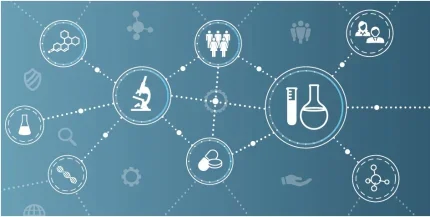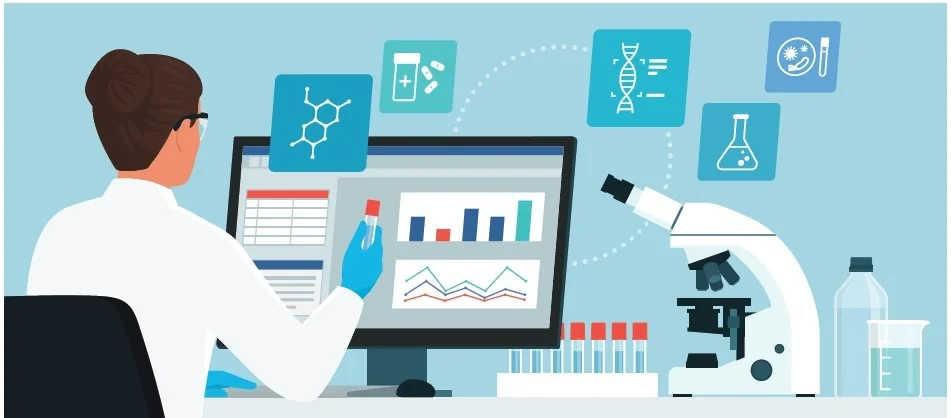
New cancer drug candidates have just a 3.4% chance of making it through clinical trials. At least, that’s according to 2019 estimates by the Massachusetts Institute of Technology (MIT). Out of all the fields they looked at, oncology trials had the slimmest odds of success. Most of the time, failure is down to a drug not working well enough or causing troublesome side effects. After all, developing effective cancer therapies is very difficult: it’s a problem the medical world has been grappling with for centuries.
On top of that, cancer trials are expensive. They tend to be more complex and take longer than those in other fields, and so require more resources. All of this can put companies off from developing drugs in challenging fields such as neuro-oncology, says MD, director of the Center for Neuro-Oncology at Dana-Farber Cancer Institute, Patrick Wen.
What if there was a way to lower the bar to entry, making cancer trials quicker and cheaper without compromising their integrity? Adaptive trial design is one possible answer. These are trials that allow for pre-planned adaptations based on interim assessments of data: you decide when you’ll analyse your data and actions you’ll take based on the findings ahead of time. This way, the course of the trial can be modified without deviating from the protocol. With this flexibility, you can gauge whether a treatment holds promise sooner – and take steps to either cut your losses or move forward with an asset more likely to succeed.
Finding the best treatment
Usually, when people talk about adaptive trials they’re referring to studies with one shared control arm for many different experimental arms, explains Lillian Siu, senior medical oncologist at the Princess Margaret Cancer Centre. This allows you to investigate multiple therapies at the same time to find out which is best.
“The algorithms learn, so that the arm that is more efficacious has a higher probability that a patient will be randomised into that arm.”
Dr Patrick Wen
As experimental arms show promise, you can decide to enrol more patients into them while less effective arms are dropped off. You’d then collect more data for the treatments with better odds of succeeding. The winning arm could then be graduated into further phases of research. “Or maybe that’s even sufficient evidence for you to get registration,” says Siu.

Here, you’re getting answers faster – and it might take fewer patients overall to generate the data needed to reach those conclusions. “It’s much quicker, and all your sites are already up and running,” says Wen. “So you don’t have to start from scratch [with each new treatment arm].”
3.5%
The percentage of new cancer drug candidates that have a chance of making it through clinical trials.
MIT
While an adaptive design clinical trial may take more resources to set up, it can drive savings in the long term. For instance, having a shared control arm means you can avoid running separate trials to test each treatment.
The Phase II INSIGhT trial, the first multi-arm adaptive trial for the brain tumour glioblastoma, is one example. Initially, there were three experimental arms yet none of them showed an effect. But thanks to the trial’s adaptive design, this was discovered through one rather than three separate investigations. And despite none of the drugs working, INSIGhT wasn’t a failure. Its design allowed for more treatment arms to be added – so the research is ongoing. “Here, a new arm is just an amendment to the protocol,” says Wen, who is the principal investigator on INSIGhT. “If you had unlimited capacity, you could add as many arms as you want.”
“You can also use this kind of adaptation to look at different doses and schedules,” adds Siu. Each study arm could be a different dose or schedule and you could find out which to move forward with sooner. “The FDA is really advocating [for] this kind of dose-range finding before we go into deeper phases of clinical trials,” she says.
Investigating biomarkers
If a cancer trial is looking at targeted or immunotherapies, patients need certain biological markers (biomarkers) for treatments to be effective. These could be specific proteins the drug interacts with, for instance. Adaptive trials can help us to understand and validate those biomarkers more efficiently. This was one aim of the INSIGhT trial. Each of the three initial experimental arms had a biomarker hypothesis: one was the protein epidermal growth factor receptor (EGFR) should have an altered structure, be mutated, or present in high levels for the drug neratinib to be effective (EGFRpositive). Before starting, each participant underwent tumour genomic sequencing – looking at the sequence of DNA within the cancer – to identify the relevant biomarkers. INSIGhT is one of the first neuro-oncology trials to have this requirement.
If the hypothesis was correct, the algorithm would allocate more EGFR-positive people into the neratinib arm. “Theoretically, that was the goal,” says Wen.
Although the initial drugs didn’t work, the approach is still valid, he adds. Had the treatments been effective, this one study could have produced evidence in support of three different biomarkers.
Not only can this approach save time, but it may help form a more robust understanding of the disease and biomarkers being studied. “It gives us more information, because you’re putting things in context with other things,” says Siu.
And if you’re just investigating the one biomarker, you can test different therapies to learn which it may be suited to. Siu gives an example: tumour mutational burden (TMB) is a measure of the total amount of mutations in the DNA of cancer cells. Tumours with a higher number of mutations may be more likely to respond to drugs that help the immune system attack cancer cells (immunotherapy). Here, you could run an adaptive trial that assesses different combinations of immunotherapy on people with high TMB.
Benefiting patients
When there are multiple treatment arms, an adaptive design allows you to randomise more patients into those which are showing a better effect. This is especially impactful with cancers where the standard treatment received by those on the control arm is known to be ineffective. If a trial has a single experimental arm and one control, a patient’s chance of receiving the standard treatment is 50%. But if there are three experimental arms, those odds drop to 25%. As the trial continues and data is analysed, patients are then more likely to be randomised into groups with treatments that are showing a better effect – so their chances of getting the control dip even further. This is done statistically and is known as Bayesian adaptive randomisation. “The algorithms learn, so that the arm that is more efficacious has a higher probability that a patient will be randomised into that arm,” says Wen.
3–5%
The percentage of eligible adult cancer patients estimated to participate in clinical research.
NCBI
“It’s in the hope that you would benefit more patients and you get more data into the arm that you think is most likely to go forward,” says Siu. Patients have a greater chance of receiving the best treatment available to them at that time, “instead of having to choose one of several studies to enter on [their] own,” she adds. And if patients know they’ve got higher odds of getting the better treatment, they may be more likely to enrol in the trial. It’s estimated that currently, just 3–5% of eligible adult cancer patients participate in clinical research. Having a 50% chance of receiving a standard treatment you’re confident won’t help you is a big disincentive, says Wen. “Reducing that to at least 25% or potentially less helps a little bit.”
For this reason, people with cancers that have limited or no treatments available may be particularly amenable to adaptive trials. Per a whitepaper by the Cholangiocarcinoma Foundation, these groups can see clinical trials as their best option – so receiving an ineffective therapy or placebo would be out of the question.
Looking ahead
While an adaptive design clinical trial can be more efficient and appealing to patients, it’s important to remember that it isn’t the answer to every question in oncology, cautions Siu. It depends on “the agents you have and all the circumstances operationally”. For instance, if you were measuring an outcome that takes a long time to observe, there may not be a point in using an adaptive framework. Plus, some fields in oncology may not have enough drug candidates to put into adaptive trials in the first place. There are relatively few glioblastoma treatments that are suitable for trials, notes Wen.
Yet the promise of adaptive design clinical trial is immense: we could get answers quicker while benefitting more patients. And the potential time and cost savings may convince more companies to ramp up their oncology R&D, Wen says. “Companies that may have thought, ‘I don’t want to do glioblastoma trials,’ now might think, ‘Well, it’s not so big a trial and it’s not so expensive’.
“That’s part of the reason we did all these trials, to have more companies become interested in helping our patients.”





